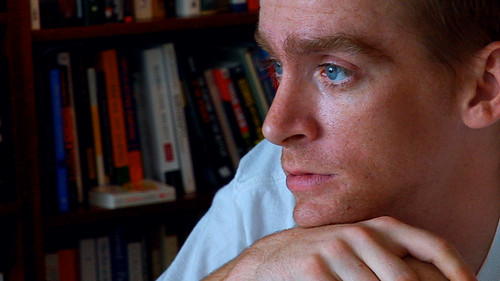I’m sure you will be reading and watching with great interest today the testimony of Ina Drew in front of the Senate Subcommittee on Investigations.
(Annoying auto starting video now below the fold- ek)
The Fail Whale trade is a bit complicated in it’s details, but basically JPMorgan Chase was selling insurance against a basket of corporate bonds that made up a fairly regularly (as these things go) traded index (like the Dow, but not the same companies and not common stock) and was supposedly hedging these bets with actual positions in the underlying assets and making money off the spread between the price for the insurance and the cost of the bonds.
Esoteric but perfectly sound and legal (under today’s laws).
The problem was that in order to manipulate the much smaller market for the insurance and increase the spread by simulating demand (sockpuppets), JPMorgan Chase ended up in a position where it was net bearish on the bonds (i.e. betting there would be a default so it could collect the insurance from itself) thereby increasing its need to obtain bonds in the regular market that it did not totally control in order to offset potential losses should the bonds in fact do better than expected and rise in price.
And then the wolves came in.
You can’t throw large chunks of money around a small casino without somebody noticing and a lot of regular players saw the increase in demand for bonds and started buying them up, raising the price even more and making JPMorgan Chase’s insurance nearly worthless.
Now on the money losing end of the trade JPMorgan Chase tried unwinding it, selling their sockpuppet positions in the insurance for pennies on the dollar and liquidating their hedge assets at what they thought was the top of the underlying market.
Only the wolves were there first and valuations dropped like a stone to their normal equilibrium and JPMorgan Chase ended up with an approximately $6.5 BILLION loss.
Yay for our side. Way to stick it to the man.
But wait, there’s more.
The funds JPMorgan Chase used were taxpayer insured depositor’s accounts, which is illegal. Manipulating markets using sockpuppets is illegal.
AND to cover up these crimes JPMorgan Chase started issuing fraudulent statements to Government Regulators, which is illegal; AND TO ITS VERY OWN STOCKHOLDERS AND INVESTORS, which is illegal.
And Jamie Dimon knew all about it and lied to Congress, which is illegal.
Will anyone go to jail? Who’s naive now Kay?
Senate investigation finds JP Morgan hid mistakes as trade losses grew
Heidi Moore, The Guardian
Friday 15 March 2013 04.38 EDT
JP Morgan’s $6.2bn London Whale trading debacle was born out of secretive trades and creative bookkeeping as the bank attempted to limit losses using a practice that one regulator called “make believe voodoo magic”, a Senate investigation has concluded.
The report by the Senate subcommittee on investigations, published on Thursday, detailed a series of failures in which accounts were hidden and trades were valued incorrectly to minimize losses. It also alleged that regulators were kept in the dark, a head trader’s concerns went unheeded and a $51bn trading portfolio ballooned to $157bn in three months.
…
The report also concludes that JP Morgan CEO Jamie Dimon, whose bonus was cut in half to $11.5m last year, knew about the sustained trading losses when he dismissed the incident as a “tempest in a teapot” in April 2012.
…
The investigation paints a picture of a growing debacle that started with the bank’s attempt to reduce the risk of its trades so that it would have a stronger capital cushion and look powerful to regulators. It started with the overconfidence of traders after a lucky bet made about $400m on the bankruptcy of American Airlines. Drew applauded the traders.
They suffered from that overconfidence when they bet incorrectly on the bankruptcy of Eastman Kodak in January 2012. That kicked off nine straight days of trading losses that cost the bank at least around $50 million. One trader in the CIO told the Senate committee that “they were told not to let an Eastman Kodak-type loss happen again.” As the traders scrambled to keep the trades – which were designed to benefit if there was a financial crisis – they found that the improving bond market worked against them. Between January and March 2012, it didn’t have one profitable day in its CIO portfolio, according to the report.
JPMorgan Chase CEO Jamie Dimon is accused of hiding information about big losses
By Danielle Douglas, Washington Post
Mar 15, 2013 12:59 AM EDT
Washington dealt a double blow Thursday to JPMorgan Chase as a Senate report accused its iconic chief executive of hiding information about a massive loss from regulators while the Federal Reserve unexpectedly said it had found a “weakness” in the bank’s capital plans.
The twin announcements, both unveiled in the late afternoon, escalates the problems for JPMorgan, the nation’s largest bank and arguably its most prestigious. Once viewed as the strongest bank to emerge from the 2008 financial crisis, the firm on Thursday watched its weaker rivals, Bank of America and Citigroup, sail through the Fed’s examination.
…
The Senate report is the first to suggest that JPMorgan’s chief executive Jamie Dimon was less than forthright with regulators as he learned of the mounting losses. To date, Dimon has acknowledged that the bank failed to manage its risks, which allowed the bad trades to persist.
The report takes the bank to task for hiding losses for three months last year, overstating the value of its trading positions and ignoring red flags. When regulators grew concerned, JPMorgan withheld information about the nature of the portfolio, Senate investigators say.
JPMorgan Report Piles Pressure on Dimon in Too-Big Debate
By Dawn Kopecki, Clea Benson & Hugh Son, Bloomberg News
Mar 15, 2013 10:05 AM ET
JPMorgan Chase & Co. (JPM)’s efforts to hide trading losses, outlined in a Senate report yesterday, probably will ignite debate over whether the largest U.S. bank is too big to manage and ratchet up pressure on Chief Executive Officer Jamie Dimon to surrender his role as chairman.
Dimon misled investors and dodged regulators as losses escalated on a “monstrous” derivatives bet, according to a 301-page report by the Senate Permanent Subcommittee on Investigations. The bank “mischaracterized high-risk trading as hedging,” and withheld key information from its primary regulator, sometimes at Dimon’s behest, investigators found. Managers manipulated risk models and pressured traders to overvalue their positions in an effort to hide growing losses.
…
The Senate report cited Bloomberg stories published last year disclosing that Dimon, 57, had transformed the CIO in the past five years from a conservative investment operation into a much larger, high-risk trading profit center, and that he exempted the office from rigorous scrutiny.
…
JPMorgan’s credit portfolio more than tripled from a net notional size of $51 billion in late 2011 to $157 billion by the time trading was shut down in late March of last year, the report says. Iksil acquired more than $80 billion, or about 50 percent, of a thinly traded credit index, which made it difficult to find buyers, according to the subcommittee.
…
Iksil’s book breached all five of the CIO’s internal risk measures, and with increasing frequency from January through April, totaling more than 330 violations, the report said. Instead of investigating the cause or reducing its danger, traders, risk managers and executives criticized the metrics as inaccurate and “pushed for model changes that would portray credit derivative trading activities as less risky,” the report said.
On Jan. 30, 2012, the bank began using a new formula for so-called value at risk that cut Iksil’s estimated possible losses by about half. He had breached the limit under the prior model.
“The new VaR model not only ended the SCP’s breach, but also freed the CIO traders to add tens of billions of dollars in new credit derivatives to the SCP which, despite the supposedly lowered risk, led to additional massive losses,” the report said, referring to the synthetic credit portfolio. That model was later scrapped.
…
JPMorgan misled the public by hiding losses, mismarking trades, withholding information from the Office of the Comptroller of the Currency and “lying to investigators by saying that JPMorgan was fully transparent to regulators regarding the mounting losses when it was not,” (Senator John) McCain told reporters at a press briefing.
…
“None of those statements made on April 13 to the public, to investors, to analysts were true,” (Senator Carl) Levin said. “The bank also neglected to disclose on that day that the portfolio had massive positions that were hard to exit, that they were violating in massive numbers key risk limits.”
…
Statements and regulatory filings by the bank “raise questions about the timeliness, completeness and accuracy of information” given to investors, the committee said in a section on securities laws and their requirements about disclosing information. The Securities and Exchange Commission has been conducting its own investigation of the bank’s losses.
The evidence suggests the bank “initially mischaracterized or omitted mention” of the portfolio’s problems partly because it “likely understood the market would move against it if even more of those facts were known,” the report says.
(h/t Susie Madrak @ Crooks & Liars)
Live-Blogging Senate Hearing Tomorrow, When J.P. Morgan Chase Will Be Torn a New One
Matt Taibbi, Rolling Stone
POSTED: March 14, 5:00 PM ET
Why should we care if a private bank, or more to the point a private banker like Chase CEO Jamie Dimon, loses a few billion here and there? What business is it of ours? And why did we have to have congressional hearings about it last year?
…
What the report describes is an epic breakdown in the supervision of so-called “Too Big to Fail” banks.
…
If the information in the report is correct, Chase followed the behavioral model of every corrupt/failing hedge fund this side of Bernie Madoff and Sam Israel, only it did it on a much more enormous scale and did it with federally-insured deposits. The fund used (in part) federally-insured money to create, in essence, a kind of super high-risk hedge fund that gambled on credit derivatives, and just like Sam Israel did with his Bayou fund, when it got in trouble, it resorted to fudging its numbers in order to disguise the fact that it was losing money hand over fist.
Chase for years hid the very existence of this operation from banking regulators and lied about the purpose of the fund (saying it was purely a hedging operation when it stopped being a hedge and instead became a wild directional gamble), and it also changed the way it calculated the fund’s value once it started to lose hundreds of millions of dollars. Even worse, the bank’s own internal auditors signed off on the phoney-baloney accounting of this Synthetic Credit Portfolio (SCP), at one point allowing it to claim $719 million in losses when the real number was closer to $1.2 billion.
How did they do this? In the years leading up to January of 2012, Chase used a standard, plain-vanilla method to price the derivative instruments in its portfolio. The method was known as “mid-market pricing”: if on any given day you had a range of offers for a certain instrument – the “bid-ask” range – “mid-market pricing” just meant splitting the difference and calling the value the numerical middle in that range.
But in the beginning of 2012, Chase started to lose lots of money on the derivatives in its SCP, and just decided to change its valuations, that they weren’t in the business of doing “mids” anymore.
…
If you can fight through the jargon, what this basically means is that Chase decided to go into the fiction business and invent a new way to value its crazy-ass derivative bets, using, among other things, a computerized model the company designed itself called “P&L predict” which subjectively calculated the value of the entire fund toward the end of every business day.
If this all sounds familiar, it’s because it’s the same story we’ve heard over and over again in the financial-scandal era, from Enron to WorldCom to Lehman Brothers – when the going gets tough, and huge companies start to lose money, they change their own accounting methodologies to hide their screw-ups, passing the buck over and over again until the mess explodes into the public’s lap.


 On this day in 1854,
On this day in 1854, 

